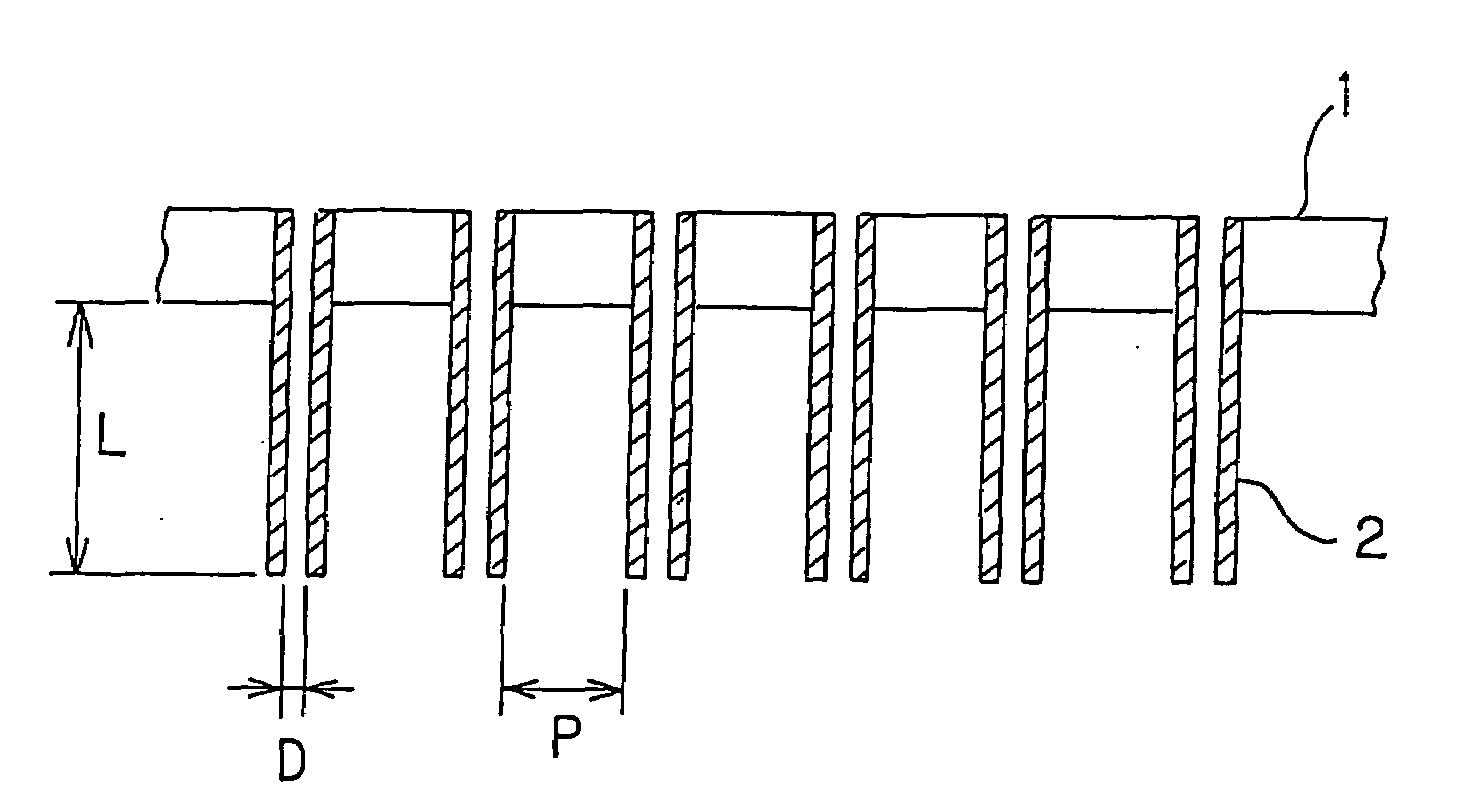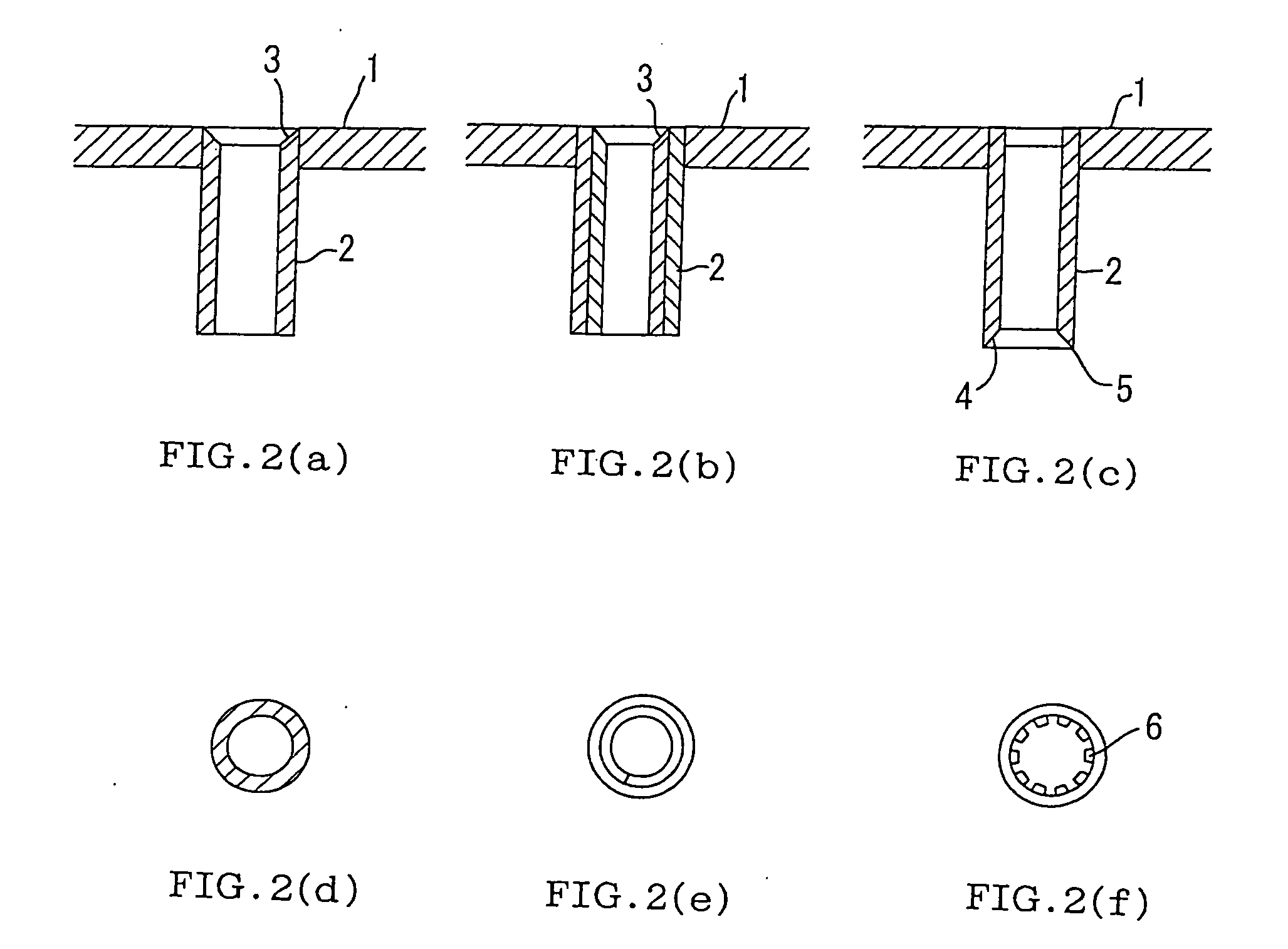Method for Manufacturing Particulate Chemical Substances and Particulate Products of Such Substances
a technology of chemical substances and parts, applied in the direction of manufacturing tools, natural mineral layered products, cellulosic plastic layered products, etc., can solve the problems of energy consumption, the method of heating a gas possesses a problem, and the inability to obtain particulate chemical substances having a desired particle size distribution, etc., to achieve the effect of preventing dust generation
- Summary
- Abstract
- Description
- Claims
- Application Information
AI Technical Summary
Benefits of technology
Problems solved by technology
Method used
Image
Examples
example 1
[0039]A spray granulation apparatus having a nozzle plate made of 304SS stainless steel with a thickness of 6 mm is used as a granulation apparatus. The nozzle plate is provided with pipes with an inner diameter of 0.45 mm, an outer diameter of 2.0 mm, and a length of 20 mm. A desired number of pipes are soldered as nozzle pipes. Phenothiazine, with a melting point of 182° C., is heated to 210-230° C. to melt and is dropped through the nozzle plate with nozzle pipes. The back pressure during dropping is kept at 0.05-0.1 MPa. Cold nitrogen gas is blown counter-currently into the droplets to obtain phenothiazine particles. The particle size distribution after completion of granulation is shown in the following Table 1. The phenothiazine, just after production, without sieving, is subjected to sieving using JIS Standard Sieves to determine the particle size distribution, and the result thereof is shown in Table 1 below. FIG. 3 is a graph showing thus obtained particle size distribution...
example 2
[0044]The same experiment as in Example 1 is carried out except using wax with a melting point of 75° C., which is heated to 110-130° C. to melt and dropped. The back pressure during dropping was 0.05-0.1 MPa. Cold air is blown counter-currently into the mass to obtain wax particles. The particle size distribution after completion of granulation is shown in the following Table 2. FIG. 6 is a graph showing this particle size distribution. Moreover, the microscope examination in the same manner reveals that a similar result to that in Example 1 is observed.
TABLE 2Particle diameterAmount of particles (wt %)1.7 mm − 2.0 mm15.541.4 mm − 1.7 mm77.521.0 mm − 1.4 mm5.400.5 mm − 1.0 mm1.51Less than 0.5 mm0.05
PUM
| Property | Measurement | Unit |
|---|---|---|
| distance | aaaaa | aaaaa |
| distance | aaaaa | aaaaa |
| length | aaaaa | aaaaa |
Abstract
Description
Claims
Application Information
 Login to View More
Login to View More - R&D
- Intellectual Property
- Life Sciences
- Materials
- Tech Scout
- Unparalleled Data Quality
- Higher Quality Content
- 60% Fewer Hallucinations
Browse by: Latest US Patents, China's latest patents, Technical Efficacy Thesaurus, Application Domain, Technology Topic, Popular Technical Reports.
© 2025 PatSnap. All rights reserved.Legal|Privacy policy|Modern Slavery Act Transparency Statement|Sitemap|About US| Contact US: help@patsnap.com



